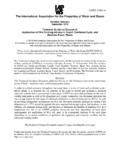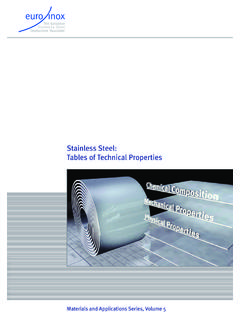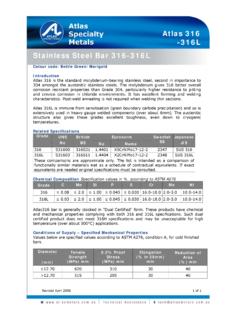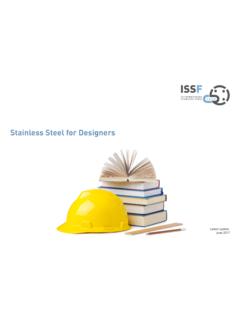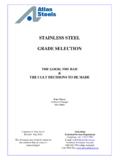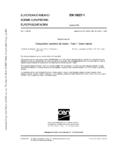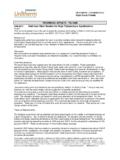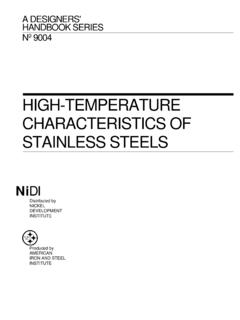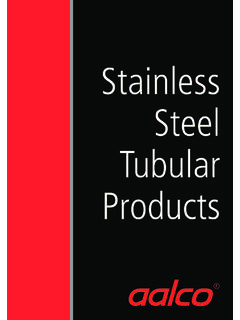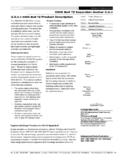Transcription of The International Association for the Properties of …
1 IAPWS TGD3-10(2015) The International Association for the Properties of Water and Steam Stockholm, Sweden July 2015 technical Guidance Document 2015 Revision: Volatile treatments for the steam-water circuits of fossil and combined cycle/HRSG power plants 2015 International Association for the Properties of Water and Steam Publication in whole or in part is allowed in all countries provided that attribution is given to the International Association for the Properties of Water and Steam Please cite as: International Association for the Properties of Water and Steam, technical Guidance Document: Volatile treatments for the steam-water circuits of fossil and combined cycle/HRSG power plants (2015).
2 This technical Guidance Document has been authorized by the International Association for the Properties of Water and Steam (IAPWS) at its meeting in Stockholm, Sweden, 28 June to 3 July, 2015. The members of IAPWS are: Britain and Ireland, Canada, Czech Republic, Germany, Japan, Russia, Scandinavia (Denmark, Finland, Norway, Sweden), and the United States of America. Associate Members are Argentina and Brazil, Australia, France, Greece, New Zealand, and Switzerland. The President at the time of adoption of this document is Dr. David Guzonas of Canada. Summary This technical Guidance Document was first issued in 2010. This 2015 revision includes a small number of minor updates and clarifications, and adds guidance for Heat Recovery Steam Generators (HRSGs) that start frequently and those that are required to fast start with minimal delays to startup times.
3 These do not constitute significant changes to the scope of the document or to the guidelines for normal operation. In order to control corrosion throughout the steam/water circuits of fossil and combined cycle/HRSG plants, it is essential for the operator of the plant to choose and optimize a chemical treatment scheme that is customized to that plant. Normal target values for the appropriate level of instrumentation around the cycle must be chosen. This technical Guidance Document considers fossil and combined cycle/HRSG plants and identifies the normal target values for each plant type when operating with a volatile treatment. It is emphasized that this is an IAPWS guidance document and that, depending on local requirements, the normal or target values will need to be customized for each plant depending on the actual conditions of operation, the equipment and materials installed, and the condenser cooling media.
4 This technical Guidance Document contains 32 pages, including this cover page. Further information about this technical Guidance Document and other documents issued by IAPWS can be obtained from the Executive Secretary of IAPWS (Dr. Dooley, or from 2 Contents 1. Nomenclature and Definitions 3 2. Introduction: Purpose of Document and How to Use it 5 3. Background to Corrosion in the Water/Steam Circuits of Power Plants 5 Chemical Conditioning to Minimize Corrosion 7 4.)
5 Descriptions and Applications of Volatile Chemistries (AVT and OT) 8 AVT(R) All-volatile Treatment (Reducing) 8 AVT(O) All-volatile Treatment (Oxidizing) 8 OT Oxygenated Treatment 8 5. Tables of Chemistry Limits 9 Five Tables of Cycle Chemistry Limits 9 Chemistry Limits for Requisite Parameters at Specified Locations 10 Development of Action Levels 10 Development of Shutdown Limits 10 Dealing with Condenser Leaks
6 11 6. Road Map Approach to Customize the Chemistry Limits for Plants with Different Operating Pressures and Specific Features 19 Customization of Base Tables to Include the Effect of Drum Pressure 21 Customization of Base Tables to Consider Materials Protection in Feedwater Heater Drains and Other Two-phase Flow Areas 22 Customization of Base Tables to Consider Single-phase FAC and Changing of Feedwater Heater Materials 24 Customization of Base Tables to Consider Condensers with Copper-based Tube Materials as Alternative
7 To Tables 1 and 3 24 Customization of Base Tables to Consider Different Cooling Media and Systems 25 Customization of Base Tables to Consider Dry Cooling Systems 26 Customization of Base Tables to Consider Application of a Condensate Polisher 27 Customization of Base Tables to Consider Makeup Requirements 28 Customization of Base Tables to Consider Combined Cycle Units with or without a Deaerator (DA) 29 Fast Start HRSGs 30 7.
8 Bibliography and References 32 3 1. Nomenclature and Definitions Term Alternative or Acronym Definition Air-cooled Condensers ACC System to condense steam from a turbine by indirect air cooling All-volatile Treatment AVT AVT(R) AVT(O) Conditioning regime in which only volatile alkalizing agents are added to the feedwater (commonly ammonia but volatile amines may also be employed) May be either.
9 Reducing conditions (added reducing agent) or Oxidizing conditions (residual oxygen present) Air Removal Section ARS Part of water-cooled or air-cooled condenser where non-condensable gases are removed under vacuum Condensate Water that derives from condensation of steam after expansion in a steam turbine and passage through a condenser or process heat exchanger Condensate Polishing Plant CPP System containing ion exchange resins to purify condensate. Can also include a filtration system Condensate Pump Discharge CPD Conductivity Specific Conductivity Direct Conductivity Electrical conductivity of the water sample as measured directly without any treatment [1]
10 Conductivity after cation exchange CACE Cation Conductivity Acid Conductivity Conductivity of a water sample after passage through a strongly acidic cation exchanger in the hydrogen form Caustic Treatment CT Involves addition of NaOH to the boiler or HRSG evaporator Corrosion Fatigue CF Boiler/HRSG tube failure mechanism Degassed conductivity after cation exchange Degassed Cation Conductivity DCACE Conductivity after cation exchange of a sample from which volatile weak acids (predominantly carbonic acid) have been stripped 4 Term Alternative or Acronym Definition Drum boiler Boiler in which steam (generated in heated evaporator tubes) is separated from water in an unheated horizontal pressure vessel (drum).

